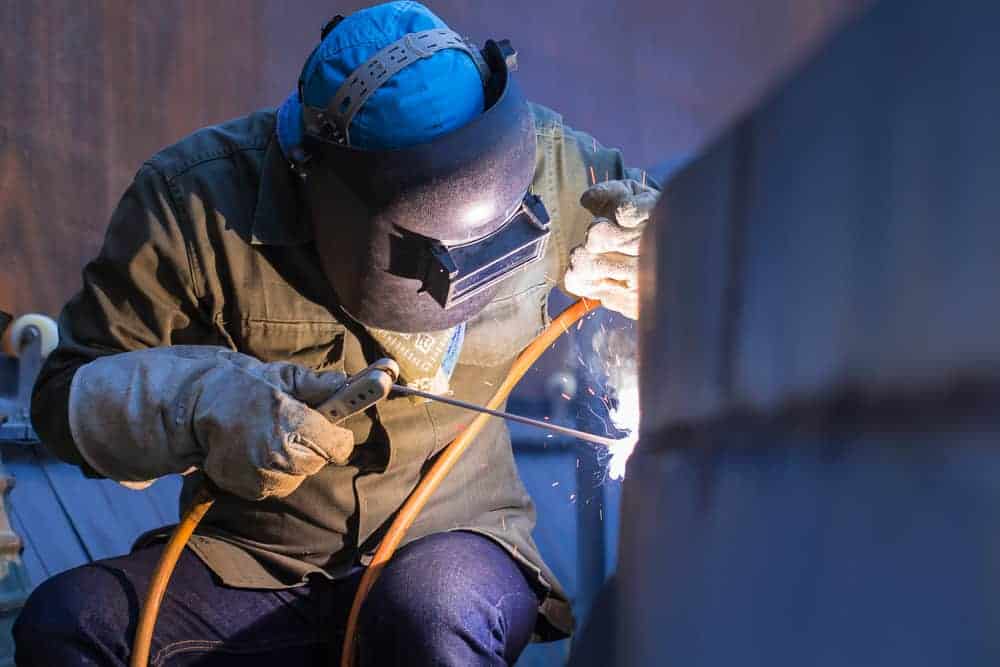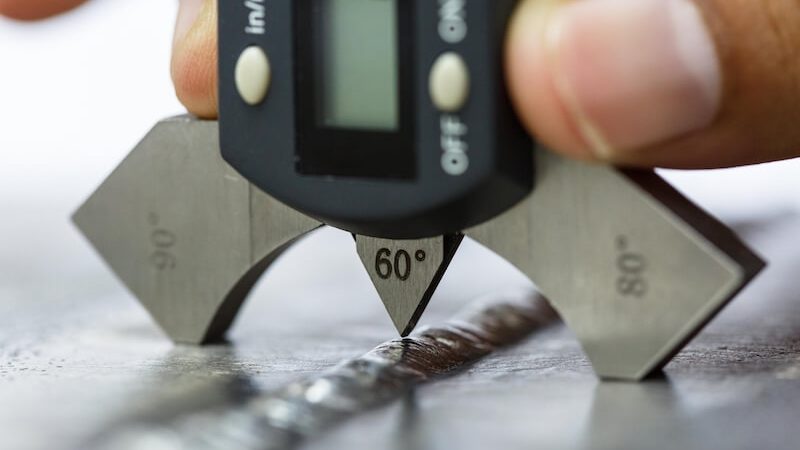The Significance of Normal Welding Inspection Milwaukee for Compliance
The Significance of Normal Welding Inspection Milwaukee for Compliance
Blog Article
A Detailed List for Effective Welding Examination Practices
In the world of welding, the honesty of frameworks is critical, necessitating a rigorous approach to assessment methods. A thorough checklist functions as a vital device in making sure adherence to sector standards, including necessary pre-welding, in-process, and post-welding evaluations. By systematically dealing with product verification, weld top quality, and thorough paperwork, organizations can dramatically boost safety and performance. However, what specific elements should be focused on in each stage to accomplish optimal results? Checking out these essential elements can yield understandings that profoundly influence welding procedures.
Comprehending Welding Specifications
Welding standards play a critical duty in guaranteeing the top quality and safety and security of welded frameworks and elements. These standards develop the criteria for products, procedures, testing, and evaluation, thus offering a structure for constant quality guarantee in welding processes. Different companies, including the American Welding Society (AWS), the International Organization for Standardization (ISO), and the American Society of Mechanical Engineers (ASME), have actually established extensive criteria that control various aspects of welding.
Comprehending welding standards is important for specialists in the area, as adherence to these standards reduces the risk of problems and failures in welded joints. These requirements cover certain demands for weld top quality, consisting of acceptable resistances, the sort of welding strategies to be utilized, and the certifications required for welders and assessors.

Pre-Welding Evaluation Steps
Prior to any welding procedure commences, a complete pre-welding examination is essential to identify prospective issues that might compromise the quality of the weld. This preliminary action functions as a critical structure for guaranteeing conformity with relevant welding codes and requirements.
The very first step in the pre-welding inspection is to verify the products being made use of. This includes monitoring for the correct kind and quality of metals as specified in the project documents. Next, it is crucial to check the fit-up of the elements to make certain correct placement and joint setup. Misalignment can cause insufficient infiltration and architectural weaknesses.
Additionally, evaluating the tidiness of the surfaces is crucial; impurities such as paint, rust, or oil can adversely affect the quality of the weld. Following this, a complete evaluation of the welding tools must be performed, making sure that it is adjusted and in great functioning problem.
Last but not least, assessing the certifications of the welding employees is important. Welders have to have the essential certifications and experience to carry out the details welds needed for the project. By sticking to these pre-welding inspection actions, the likelihood of issues and failings in the last weld can be significantly decreased.
In-Process Evaluation Techniques
In-process assessment techniques play a crucial function in making certain the honesty and high quality of welds as they are being performed. These methods allow assessors to identify issues or discrepancies from specs in real time, consequently protecting against expensive repairs and guaranteeing adherence to design demands.
One trick why not find out more technique involves visual evaluation, where inspectors analyze the weld bead for harmony, penetration, and proper account. This can be matched by the usage of evaluates to gauge weld dimensions, guaranteeing conformity with fixed resistances. Additionally, the application of non-destructive screening (NDT) techniques, such as ultrasonic screening or magnetic particle screening, throughout the welding process can reveal subsurface flaws that might not show up on the surface.
An additional essential facet is keeping my latest blog post an eye on welding criteria, including voltage, amperage, and take a trip rate. Uniformity in these criteria is crucial for attaining optimum weld high quality. Recording these parameters during the welding operation supplies a deducible document for future referral.
Educating workers in appropriate inspection techniques and the usage of suitable devices boosts the performance of in-process evaluations. By integrating these practices, companies can accomplish better welds, reduce rework, and inevitably make sure the security and reliability of bonded structures.
Post-Welding High Quality Checks
Adhering to the completion of welding operations, post-welding top quality checks are crucial to verify that the welds satisfy all defined requirements and demands. These checks are vital for making sure the stability and resilience of the bonded joints. The examination procedure typically begins with a visual evaluation, analyzing for surface flaws such as fractures, porosity, or incomplete blend.
Subsequently, non-destructive screening (NDT) approaches, such as ultrasonic screening, radiographic screening, or magnetic fragment testing, may be employed to identify internal problems that are not visible to the naked eye. Each technique has its one-of-a-kind advantages and is picked based on the weld's location, material kind, and the nature of the application.
Assessing the mechanical properties of the weld, consisting of tensile toughness and ductility, can give additional guarantee of efficiency under operational conditions. Overall, detailed post-welding evaluations are vital for keeping adherence, safety and security, and efficiency to regulatory and industry requirements.
Paperwork and Reporting
How can effective documents and reporting enhance the welding inspection procedure? Accurate paperwork and extensive reporting are vital parts that guarantee the integrity and you can try this out quality of welding operations. Welding Inspection Milwaukee. They act as a formal record of assessment searchings for, helping with accountability and traceability in compliance with sector criteria

A well-structured reporting system allows examiners to plainly communicate any kind of inconsistencies, locations, or non-conformances needing enhancement. This transparency promotes an atmosphere of continual renovation, as stakeholders can readily assess past efficiency and execute rehabilitative actions.
Furthermore, efficient documents includes in-depth records such as welding treatment specs (WPS), welder credentials, and examination checklists. These components provide a structure for examining weld high quality and adherence to established standards. In case of conflicts or high quality concerns, extensive documentation offers as a reliable referral, decreasing uncertainty and safeguarding all celebrations involved.
Last but not least, keeping organized documents assists in training and certifying personnel, ensuring that industry finest techniques are supported. Ultimately, thorough documents and reporting not just enhance the welding examination process but additionally contribute to the overall safety and security and integrity of welded structures.

Conclusion
In conclusion, an extensive checklist for effective welding assessment methods is important for guaranteeing high quality and security in welded structures. Adherence to developed welding criteria, precise pre-welding examinations, extensive in-process analyses, and thorough post-welding quality checks jointly contribute to the honesty of bonded joints. Furthermore, thorough documents and coverage of examination findings enhance responsibility and facilitate continual enhancement. Executing these practices will dramatically aid in conformity with industry criteria and ultimately promote a society of top quality in welding procedures.
Welding requirements play a vital function in making certain the top quality and safety of bonded frameworks and elements. Various organizations, consisting of the American Welding Society (AWS), the International Company for Standardization (ISO), and the American Society of Mechanical Engineers (ASME), have actually created detailed requirements that regulate different facets of welding.
Complying with the completion of welding procedures, post-welding top quality checks are important to validate that the welds satisfy all specified criteria and needs - Welding Inspection Milwaukee.In verdict, a thorough list for efficient welding inspection techniques is essential for guaranteeing quality and security in welded frameworks. Adherence to developed welding requirements, thorough pre-welding inspections, rigorous in-process evaluations, and thorough post-welding high quality checks collectively contribute to the integrity of welded joints
Report this page